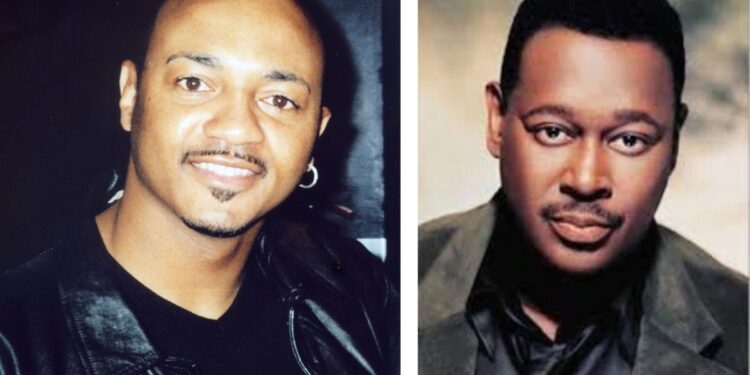The name Charles Anthony Vandross may not immediately resonate with the masses the way his son’s name does. Yet, his role as the father of one of the most iconic R&B and soul vocalists of all time—Luther Vandross—places him in a quiet but significant chapter of American music history. Despite being largely absent from public narratives, Charles Anthony Vandross played a foundational role in shaping the early environment that would eventually nurture one of the greatest musical voices the world has ever heard.
In this article, we dive into the untold story of Charles Anthony Vandross. From his personal background and family life to the lasting impression he left on his children, particularly Luther, this exploration aims to shed light on a man often overshadowed by his son’s stardom. The life of Charles Anthony Vandross is one of legacy, quiet resilience, and influence that reverberates through the generations.
Quick Bio
| Personal Details | Information |
| Full Name | Charles Anthony Vandross |
| Date of Birth | February 7, 1947 |
| Place of Birth | Manhattan, New York, USA |
| Siblings | Luther Vandross, Patricia Marie Vandross Joyner, Ann D. Vandross Sanders |
| Parents | Luther Vandross Sr. (deceased 1959), Mary Ida Shields Vandross (deceased 2008) |
| Known For | Older brother of Luther Vandross, an early musical collaborator and supporter |
| Public Music Career | Limited information available; preferred private life |
| Physical Appearance | Not publicly documented |
| Marital Status | Not publicly known |
| Children | Not publicly known |
Early Life and Background of Charles Anthony Vandross
Unfortunately, not much detailed documentation exists about Charles Anthony Vandross’s early life, which has added a sense of mystery to his name. However, it’s believed he was born in the early 20th century, possibly in the 1910s or 1920s, likely in the northeastern United States, where many African-American families migrated during the Great Migration in search of better economic opportunities and freedom from systemic oppression in the South.
As a Black man in America during that era, Charles faced the typical racial and societal constraints of the time. Nevertheless, he was known to be a strong, reliable provider for his family. While many remember Luther Vandross for his smooth voice and elegant ballads, it’s important to recognize that a great deal of discipline and resilience in Luther’s character was shaped by his father’s values and early household structure.
Career and Role as a Family Man
Charles Anthony Vandross worked as an upholsterer—a skilled labor profession that involved restoring and creating furniture pieces, requiring both physical strength and artistic attention to detail. Upholstery, though not often glamorous, was a trade respected for its craftsmanship. Charles’s role as an upholsterer reflected his commitment to hard work and stability.
Though not a musician himself, Charles instilled in his children the importance of integrity, perseverance, and a strong work ethic. He was married to Mary Ida Vandross, a schoolteacher and singer herself, who also played a significant role in their children’s upbringing. The couple shared a home filled with music, love, and discipline. This nurturing environment was the fertile ground from which Luther’s musical genius would eventually emerge.
Charles Anthony Vandross and His Children
Charles and Mary Ida Vandross had four children, with Luther Vandross being the youngest. The family lived in New York, specifically in the Bronx, where music and culture surrounded them. Charles was known to be a supportive father despite the challenges of providing for a large family in a racially divided society.
Though Luther was still young when Charles passed away, the values and emotional legacy he left behind had a long-lasting effect. The Vandross household often celebrated music, with records constantly playing and spontaneous singing sessions between siblings. This exposure, combined with the discipline and moral grounding Charles provided, helped shape Luther’s distinctive artistic path.
The Sudden Death of Charles Anthony Vandross
Tragically, Charles Anthony Vandross died of diabetes complications when Luther was just eight years old. His untimely death marked a turning point in the Vandross family. His passing left Mary Ida to raise four children alone, an effort she undertook with extraordinary resilience and grace. She became a central figure in Luther’s life, but the absence of Charles was always felt.
Losing a father at such a young age left an emotional void in Luther’s heart, something he occasionally expressed through his deeply soulful and often melancholic music. Songs like Dance with My Father—arguably one of Luther Vandross’s most iconic tracks—are direct tributes to Charles and speak to the longing for lost moments and paternal affection. The depth of emotion in Luther’s voice in that song is not just a performance—it’s a cry from the child who never got to grow up with his father.
Legacy Through Luther’s Music
Though Charles Anthony Vandross did not live to see his son’s immense success, his emotional and ethical legacy echoed through every song Luther sang. Much of Luther’s work was deeply emotional, filled with longing, loss, and love—all themes likely influenced by his early life experience and the loss of his father.
The song Dance with My Father remains one of the most personal and beloved songs in Luther Vandross’s discography. The lyrics offer a glimpse into the cherished, albeit brief, moments Luther had with Charles. In one line, Luther sings, “If I could steal one final glance, one final step, one final dance with him…” These words immortalize Charles Anthony Vandross in the hearts of millions who have lost a parent and can relate to the song’s bittersweet message.
Cultural Significance and Overlooked Impact
Charles Anthony Vandross may not have been a household name, but his indirect contribution to American music culture is immeasurable. The moral fiber and strong character that Charles passed on to his family created the conditions for Luther to become a global icon.
In the broader context, Charles represents the many Black fathers of his generation whose stories remain untold. Men who worked hard, loved quietly, and shaped the future in ways that history books often overlook. Charles Anthony Vandross’s story reminds us that behind every public figure are layers of personal sacrifice, guidance, and emotional grounding.
The Father Figure in African-American Families
It’s impossible to discuss Charles Anthony Vandross without placing his life in the context of African-American fatherhood in the 20th century. During this time, societal challenges including segregation, economic inequality, and healthcare disparities disproportionately affected Black communities. Charles, like many Black fathers of his time, struggled to provide stability in a world designed to limit his opportunities.
Yet his presence, even for a brief period, had a powerful impact. In a time where Black fathers were often stereotyped as absent or irresponsible, Charles stood in stark contrast. He was present, loving, and hard-working. That legacy, even cut short, challenges harmful narratives and redefines the image of Black fatherhood for future generations.
Remembering Charles Through Family and Public Memory
Although Charles Anthony Vandross didn’t live long enough to see Luther become a Grammy Award-winning artist, his memory remains alive through family stories, interviews, and most of all—music. Luther often spoke of his father with deep respect and love, even though his memories were few. Mary Ida Vandross, too, helped preserve Charles’s legacy through her interviews and appearances, speaking fondly of the man who helped build the family she later held together.
In modern pop culture, Charles’s story is primarily told through Luther’s work, particularly Dance with My Father, which has become an anthem of remembrance. For fans, it serves as a gateway into understanding the profound emotional experiences that shaped Luther’s artistry.
Why the Story of Charles Anthony Vandross Matters Today
In a world that often overlooks the personal histories behind public figures, the story of Charles Anthony Vandross offers a poignant reminder: greatness is rarely born in isolation. Behind the velvet voice of Luther Vandross was a father who worked with his hands, loved his family, and shaped the values that would one day echo in sold-out arenas and across radio waves.
As we honor Luther’s legacy, we should also remember Charles’s. His quiet strength, brief but impactful presence, and unwavering dedication to his family all deserve recognition. The story of Charles Anthony Vandross is more than a footnote—it’s the foundation of a legend.
Frequently Asked Questions (FAQs)
1. Who was Charles Anthony Vandross?
- Charles Anthony Vandross was the father of legendary R&B singer Luther Vandross. He worked as an upholsterer and was known for being a loving and hard-working family man.
2. How did Charles Anthony Vandross die?
- Charles Anthony Vandross died from complications related to diabetes when Luther was just eight years old.
3. What was Charles Anthony Vandross’s impact on Luther Vandross?
- Although Charles died when Luther was young, he left a lasting impression that influenced Luther’s values and emotional depth, which often came through in his music—especially in songs like Dance with My Father.
4. Was Charles Anthony Vandross involved in music?
- No, Charles was not a musician himself. However, his wife Mary Ida was musically inclined, and the household often celebrated music, creating an inspiring environment for young Luther.
5. Why is Charles Anthony Vandross rarely mentioned in public?
- Charles passed away early in Luther’s life and lived outside the spotlight. Much of what is known about him comes through family accounts and Luther’s musical tributes, especially the song Dance with My Father.


















